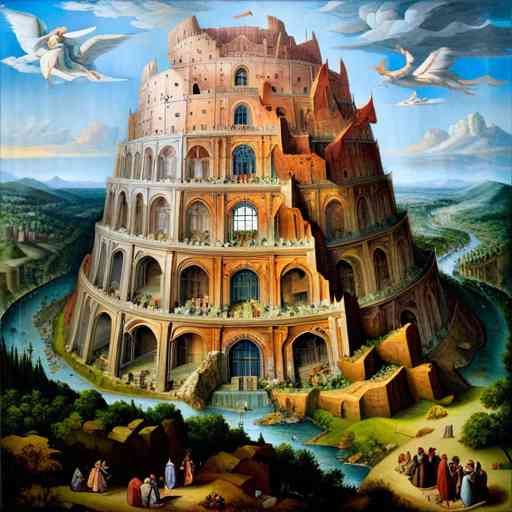Tower of Babel: LLM Technology and the Reconciliation of Tongues
 It’s a story as old as civilization itself, imprinted in the annals of our collective psyche: the Tower of Babel. In this biblical narrative, a unified humanity once spoke a common language, fostering unparalleled cooperation and innovation. As humanity sought to challenge the divine, constructing a tower reaching for the heavens, God, in response to their hubris, confounded their language, thereby dispersing them across the globe. From this tale was born our world's linguistic diversity, creating both a fascinating richness and a barrier to global understanding. Today, we stand on the brink of a new era, one that could metaphorically undo this ancient division through the magic of technology: Large Language Models, or LLMs.
It’s a story as old as civilization itself, imprinted in the annals of our collective psyche: the Tower of Babel. In this biblical narrative, a unified humanity once spoke a common language, fostering unparalleled cooperation and innovation. As humanity sought to challenge the divine, constructing a tower reaching for the heavens, God, in response to their hubris, confounded their language, thereby dispersing them across the globe. From this tale was born our world's linguistic diversity, creating both a fascinating richness and a barrier to global understanding. Today, we stand on the brink of a new era, one that could metaphorically undo this ancient division through the magic of technology: Large Language Models, or LLMs.
LLMs are artificial intelligence models trained on vast amounts of text data, capable of understanding and generating human language in a way that was previously unimaginable. Models such as GPT-4, developed by OpenAI, have the capacity to read and write in multiple languages, translate between them, and even generate creative text like poetry and stories. Their comprehensive training data encompasses the internet's vast pool of multilingual knowledge, enabling them to grapple with the world's rich tapestry of languages.
At the heart of this technology is the transformative power of machine learning. Unlike traditional rule-based systems that require pre-defined grammar rules and vocabulary lists, LLMs learn languages by exposure to large amounts of text data in those languages, in a way reminiscent of how children learn their first language. Through this process, they can capture the nuanced details and exceptions that typify natural languages.
The implications for global communication are profound. Imagine a world where language barriers no longer exist, where anyone can communicate with anyone else, no matter what language they speak. LLMs are making this dream a reality.
Whether you're an entrepreneur in Lagos wanting to sell your products to customers in Tokyo, a student in Moscow studying from textbooks written in Madrid, or a tourist in Beijing asking locals for the best places to visit, LLMs are there to bridge the gap. By providing high-quality, real-time translation, these models are dissolving the boundaries that have historically divided us, enabling a new era of understanding and cooperation. In this way, they are constructing a virtual Tower of Babel, not to challenge the divine, but to unify humanity in a manner it hasn't experienced since the story was first told.
Moreover, these models are not just limited to the written word. With the integration of speech recognition and speech synthesis technology, they can also be used for real-time spoken language translation. This opens up a world of possibilities for interpersonal communication, international diplomacy, global business, and education.
It's also worth noting that LLMs are powerful tools for preserving and revitalizing endangered languages. By training these models on data from languages at risk of disappearing, we can ensure that our linguistic heritage is not lost but is instead made accessible to future generations.
Of course, no technology is a panacea. Issues such as the digital divide, biased algorithms, and data privacy are significant challenges that need to be addressed. However, the potential benefits are immense. If used responsibly, LLMs can bring us closer to a world where everyone can understand and be understood, no matter what language they speak.
As we stand at the foot of this new Tower of Babel, the vista before us is one of unity, understanding, and shared knowledge. The story of Babel speaks of hubris leading to division and confusion. Today, our collective wisdom embodied in the form of LLMs promises to guide us back towards understanding and harmony, not by towering edifices, but through the threads of language that weave us all together.